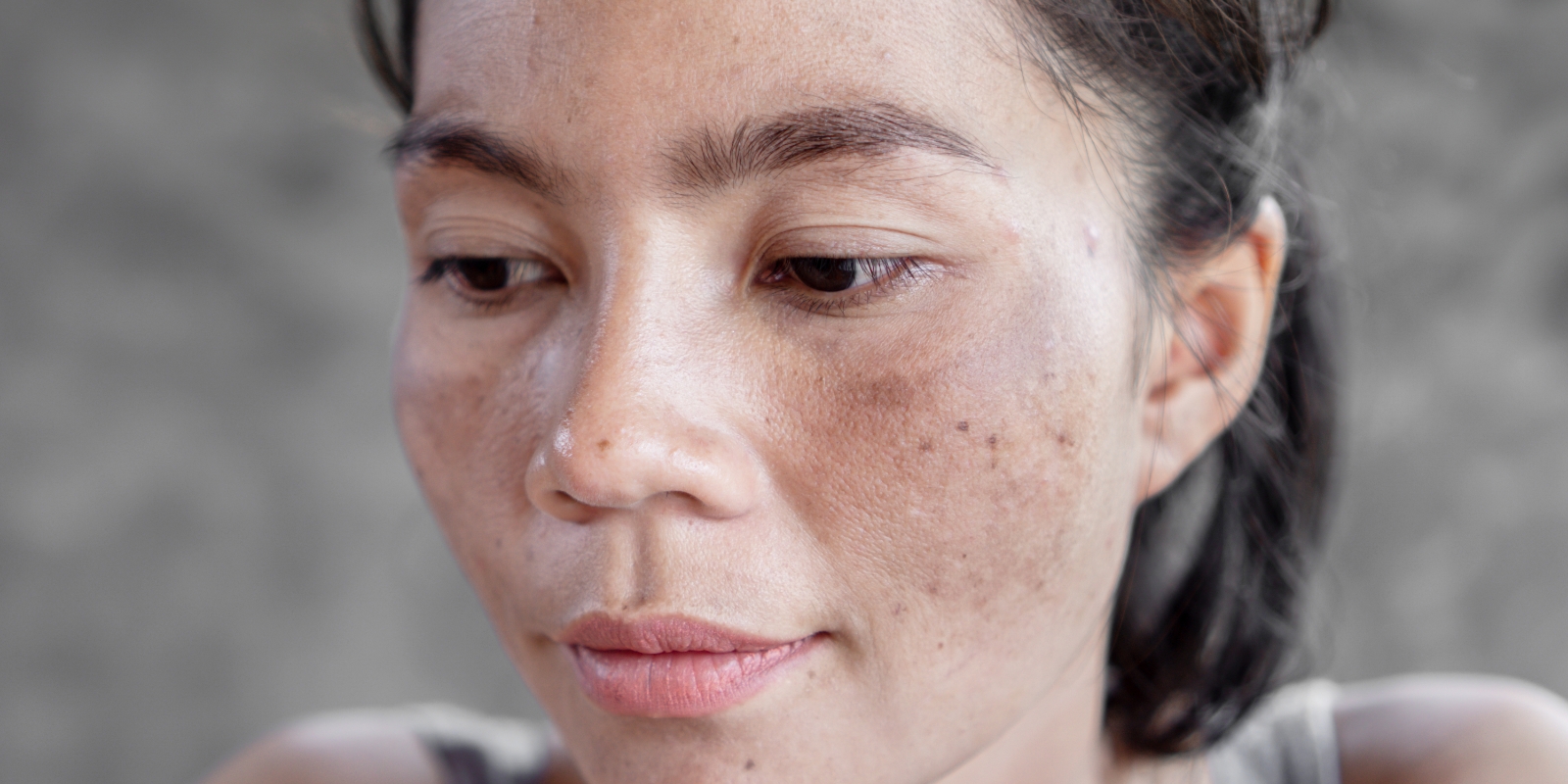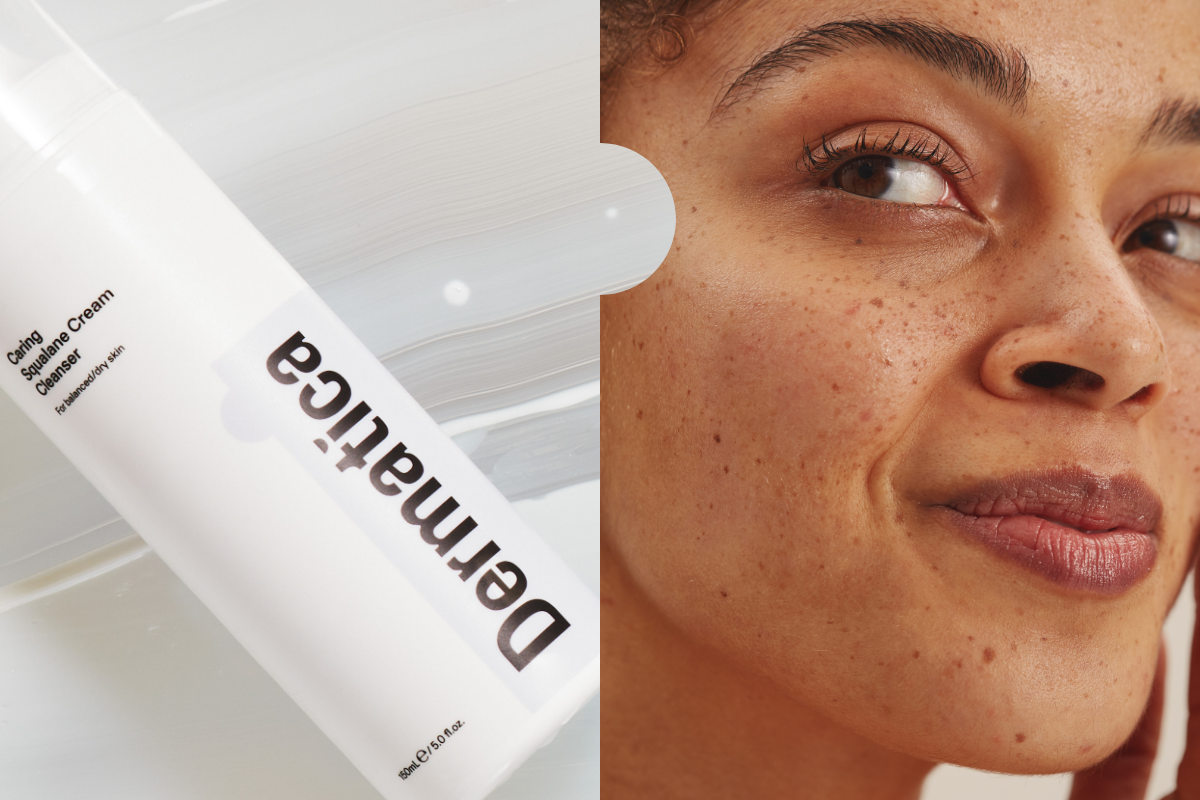Melasma is a common skin condition that leads to darkened patches of skin, usually around the cheeks, forehead, nose or chin. You may also know it as a ‘sun moustache’, or even a ‘pregnancy mask’, due to its links to UV exposure and hormonal changes.
Melasma causes pigmentation that’s typically brown or grey, and darker than your natural skin tone. Although the exact cause of melasma is unknown, it’s thought to be related to certain cells creating too much melanin, or pigment in the skin.
As with many conditions, the severity of melasma can change over time. It’s often more noticeable in the summer, due to increased sunlight, which means it can also calm down throughout winter. Although there’s no ‘cure’ for melasma, plenty of ingredients have been clinically proven to help manage its appearance.
Our favourite melasma-reducing ingredients
When formulating personalised melasma treatments, our dermatology experts carefully choose from a selection of tried-and-tested, evidence-backed ingredients, to find the most appropriate plan for each individual’s needs. Here are just some of the highly effective ingredients you might find in a custom Dermatica formula:
Azelaic Acid
You don’t need a prescription for Azelaic acid — it’s available over the counter in many skincare products, including our 20% Azelaic Acid Cream, which is the highest concentration available. It may be prescribed, though, for a variety of skin concerns. It’s suitable for all skin types and, when it comes to managing melasma, helps lighten the appearance of excess pigment.
Hydroquinone
Hydroquinone is a key active ingredient used for the treatment of melasma. It reduces the number of pigment granules in the skin’s melanocytes (or pigment cells), helping you achieve a more even skin tone.
Tretinoin
Tretinoin is the most potent of all retinoids — the vitamin A derivatives known for their cell-renewing, anti-ageing abilities. It’s only available by prescription, and clinically proven to lighten dark patches of melasma pigmentation, whether that’s the larger sun spots, or smaller chloasma on the cheeks and forehead.
Niacinamide
Niacinamide is great at complementing the targeted work of other powerful actives. In Dermatica’s custom formulas, it works alongside melasma-targeting ingredients to keep skin hydrated.
How else can I manage melasma?
The most important lifestyle habit we recommend to help manage melasma is practising sun safety. UV exposure can trigger melasma, so we always advise using a mineral or physical sunscreen (at least SPF 30) daily whether the sun is shining or not. In fact, that’s a tip we advise for all skin types! When the weather’s nice, stay out of direct sunlight if you can — especially when the sun is strongest, between 10am and 4pm.
Aside from the ingredients used here at Dermatica, there are some others that can help fade pigmentation. Topical Vitamin C is clinically proven to reduce the appearance of dark patches on the skin, resulting in a more even tone. AHAs, including glycolic and lactic acid, are also effective at evening out your skin tone due to their cell-renewing and resurfacing abilities. These ingredients aren’t as potent or effective as prescription-strength actives, but they’re a good starting point.
It’s rare, but in some cases, prescription-strength formulas may not be fully effective at fading your melasma, so you may want to look into laser or chemical peel treatments with a cosmetic practitioner. This can be due to how deep the pigmentation or melasma is on the skin. We’d always recommend starting with a science-backed topical treatment plan first, though, as it will help to gradually fade melasma.
Looking to start a prescription melasma treatment? Complete a free online consultation today.
Dr Catriona Maybury
Dr Catriona Maybury is a Consultant Dermatologist, working as Medical Lead for Dermatica and at St George’s Hospital in London. Catriona completed her specialty training at St John’s Institute of Dermatology in London. Catriona has a special interest in medical dermatology, completing a PhD in liver fibrosis amongst psoriasis patients at King’s College London. Catriona is a certified coach and worked as Dermatology Section Editor for the British Medical Journal.




